When you are not carving or painting them, pumpkins can be used for a multitude of culinary purposes. They can be used in making various types of meals, including soups, pies, lattes, stews, and much more.
While there are many pumpkin types you can use in cooking, you will find that certain types are better suited for some meals than others. For instance, Amish Pie Squash and Butternut Squash can be used in making soups. But you will enjoy them better when they are used in making pies.
If you are looking to make pies with pumpkins but are unsure of the most delicious options, we’ve got you. We talk about 15 tasty pie pumpkins in the rest of this article. And if you do not know where to get them, we even give some pointers.
Table of Contents
1. Amish Pie Squash
Amish Pie Squash may also be called Amish Pie pumpkin. It is a super large type of pumpkin that can sometimes weigh up to 80 pounds.
Amish Pie pumpkins have a sweet, densely packed flesh. It is no surprise they are used in making various baking goods.
If you are considering making pumpkin pies for a large group, you should get Amish Pie pumpkins. When you roast and puree them, you can produce a large batch of pies from one squash.
Amish Pie pumpkins are sold in general stores, grocery stores, and farmers’ markets. So you can check any of these places to get one.
2. Black Futsu Pumpkin

Black Futsu pumpkins may also be called Futsu Black pumpkins. They are a Japanese heirloom pumpkin variety, and they come with green-black rinds. Hence, their name. When they become ripe, however, they become dusty brown.
Black Futsu Pumpkins have a nutty flavor, and their dark orange flesh is pretty sweet. So it is no surprise that their puree is similar to a Butternut Pumpkin puree. Although, the nutty flavor of a Black Futsu pumpkin is more intense than that of a Butternut pumpkin puree.
You can get Black Futsu pumpkin on Instacart.
3. Buttercup Squash

Buttercup squashes are small-sized winter squash that find both ornamental and culinary uses. They come with green rinds with some vertical off-white or grey streaks, and they have a turban-like button at their base.
The taste, texture, and puree quality of Buttercup Squashes are pretty similar to Kabocha Pumpkins. But they are relatively sweeter than Kabocha Pumpkins.
Buttercup squashes produce thick purees that are packed with flavor. When added to pie filling, they make smooth, creamy pies.
You can get Buttercup squashes on Instacart and in physical grocery stores.
4. Butternut Pumpkins
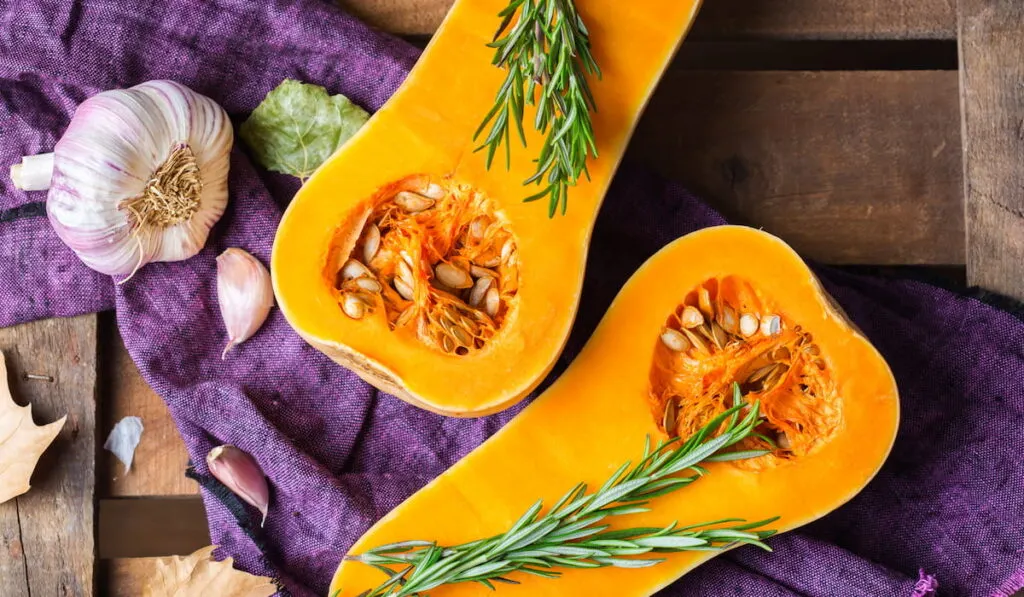
In Australia and New Zealand, Butternut pumpkins go by the name Gramma. They are a winter squash variety, and they are a top choice for making pies.
Butternut pumpkins have a sweet, nutty flavor, and this flavor is never amiss when you make pies with them.
Besides their nutty flavor, Butternut pumpkins have a whiff similar to that of mashed sweet potatoes. Their flesh is also a bit like that of sweet potatoes, but theirs is brighter and juicier.
You can get Butternut pumpkins in local farms and supermarkets. You can also get them on Instacart.
5. Cinderella Pumpkin (Rouge Vif d’Etampes)
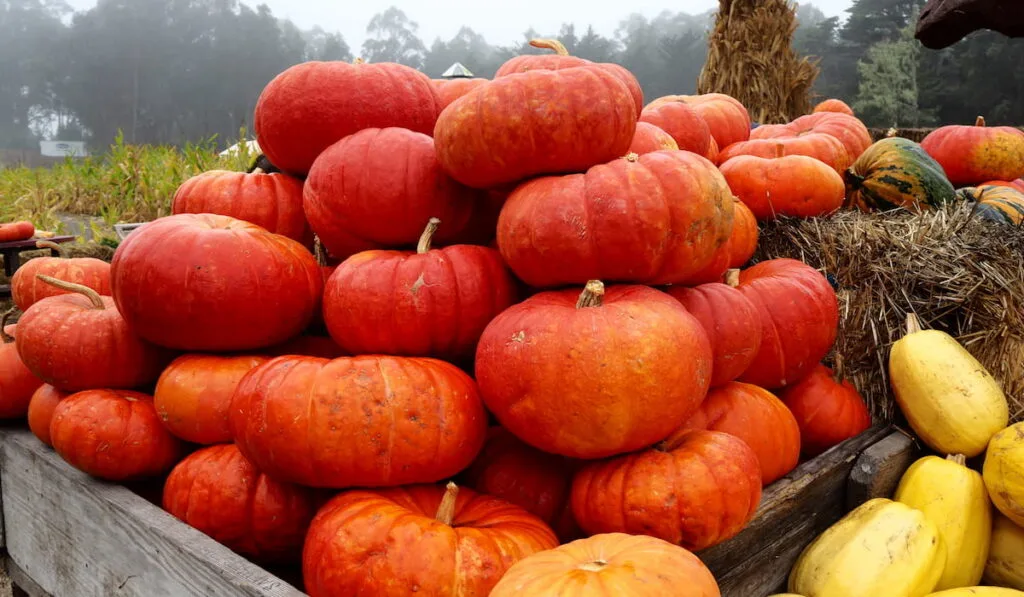
The Rouge Vif d’Etampes is also called Cinderella pumpkin because it looks like the Cinderella pumpkin carriage.
Cinderella pumpkins are an heirloom variety that originated from France. While they look nice, Cinderella pumpkins are also pretty delicious. They come with thick, brightly colored flesh, and they have minimal water content.
Cinderella pumpkins are perfect for pies and other baked meals. They may not be as tasty as some other heirlooms, but they have a sugary-piquant taste that is just perfect.
You can get a Cinderella pumpkin through Pumpkin Ranch. Their website even offers a retail outlet locator, so you can visit one of their stores close to you.
6. Dickinson Pumpkin
Dickinson pumpkins are pretty popular among chefs and bakers. They are an heirloom variety with an average weight of 10 to 14 pounds.
Dickinson Pumpkins have a rich, complex yet sweet flavor. Their orange flesh is dense, and it has minimal moisture content.
The low water content of Dickinson pumpkins is expressed in the quality of puree made from them. It also influences the texture and rich flavor of pie and bread made from them.
Considering their size, Dickinson pumpkins can be challenging for farmers and gardeners to move around. So, they are not commonly sold. Besides this, many people don’t like their looks. So, if you want some Dickinson pumpkins, you may have to grow yours.
You can get Dickinson pumpkin seeds from online stores like Rare Seeds and Mary’s Heirloom Seeds.
7. Early Sweet Sugar Pie
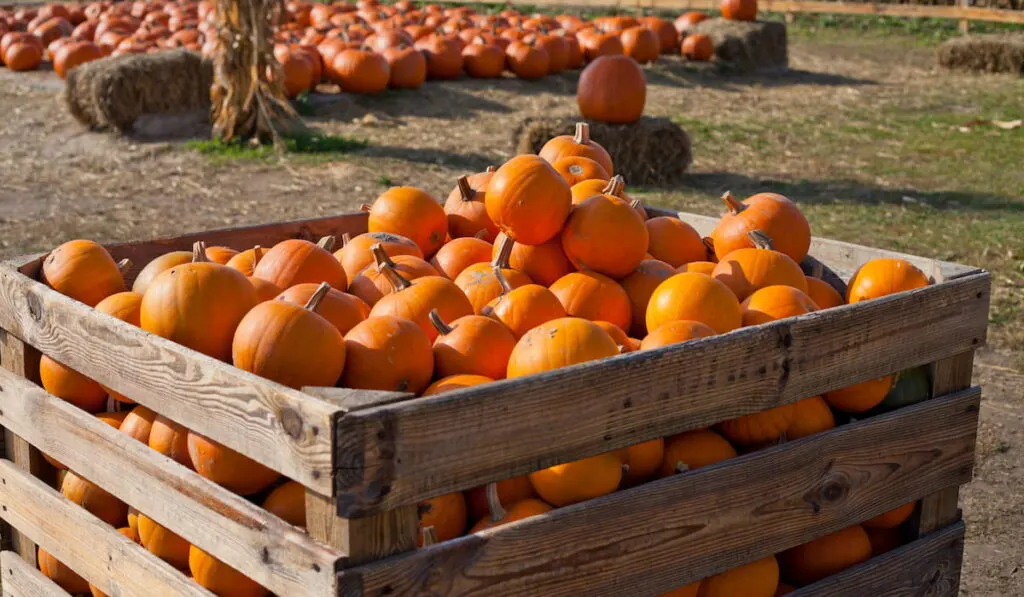
Early Sweet Sugar Pies have “Pie” in their name for a reason. They may not be large-sized, but they are ideal for making various baked goods, including pies.
Early Sweet Sugar Pies have sweet orange flesh. The flesh has a consistency perfect for making pies, muffins, and bread. And since they are tasty, their use in baked meals is ideal.
You can get Early Sweet Sugar Pies in produce markets.
8. Jarrahdale Pumpkin
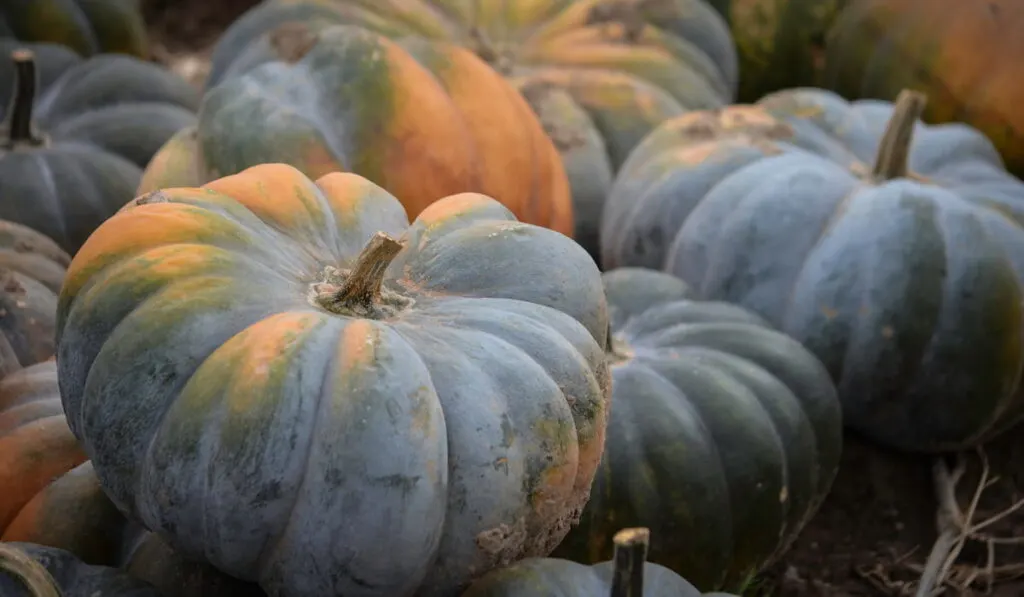
Jarrahdale pumpkins are from Jarrahdale, New Zealand. They are small to medium-sized pumpkins, with an average weight of 6 to 10 pounds.
Jarrahdale pumpkins have a melon-like flavor. Their flesh is typically stringless or minimally stringy. When used to make pies, Jarrahdale pumpkins give rise to tasty pumpkin pies. The pies are sweet enough to savor but not overly sweet so as to overwhelm.
The fruits of Jarrahdale pumpkins grow better in warm climates. So, you should have minimal issues finding where to get one in Zone 7 and upward.
You can get Jarrahdale pumpkins in your local farm markets, pumpkin patches, or pumpkin farms.
9. Kabocha Japanese Pumpkin
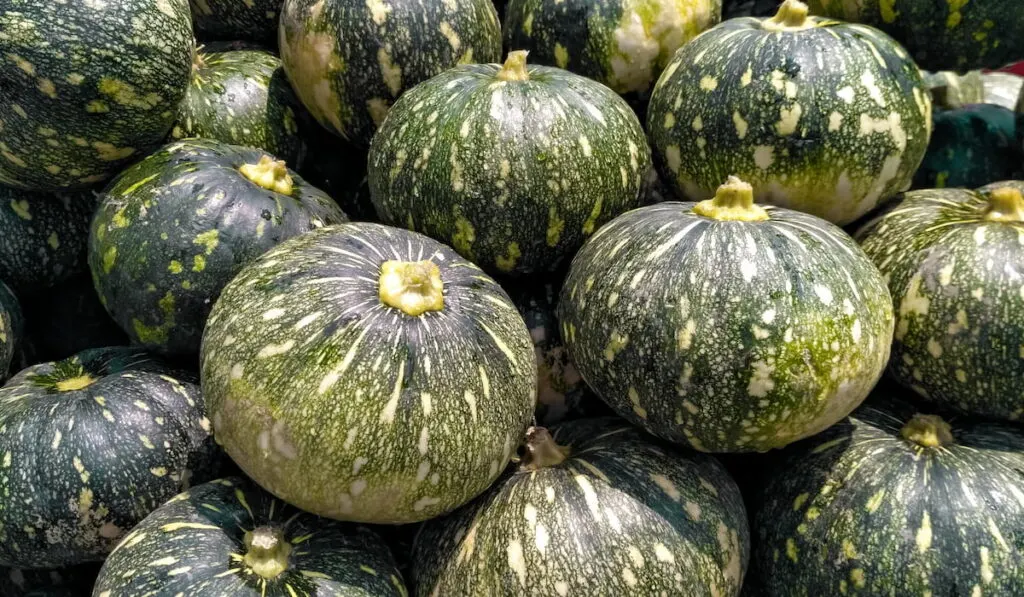
As the name already reveals, Kabocha Japanese pumpkins originated from Japan. They are a small heirloom variety primarily used in cooking.
Kabocha Japanese pumpkins are reasonably sweet, but not too sweet. Their yellow flesh has a fine, densely packed texture.
Thanks to the texture of their flesh, Kabocha Japanese pumpkins are perfect for use as pie filling. Their dark green rind is also pretty attractive when used in a baked pie shell.
Kabocha Japanese pumpkins may also be used to make purees. Kabocha Japanese pumpkin purees may be thick, but they pack significant levels of creaminess.
You can get Kabocha Japanese pumpkins in grocery stores, Asian markets, and from local pumpkin farmers. You may also get them in physical Walmart stores, Kroger, and Safeway.
10. Long Island Cheese Pumpkin
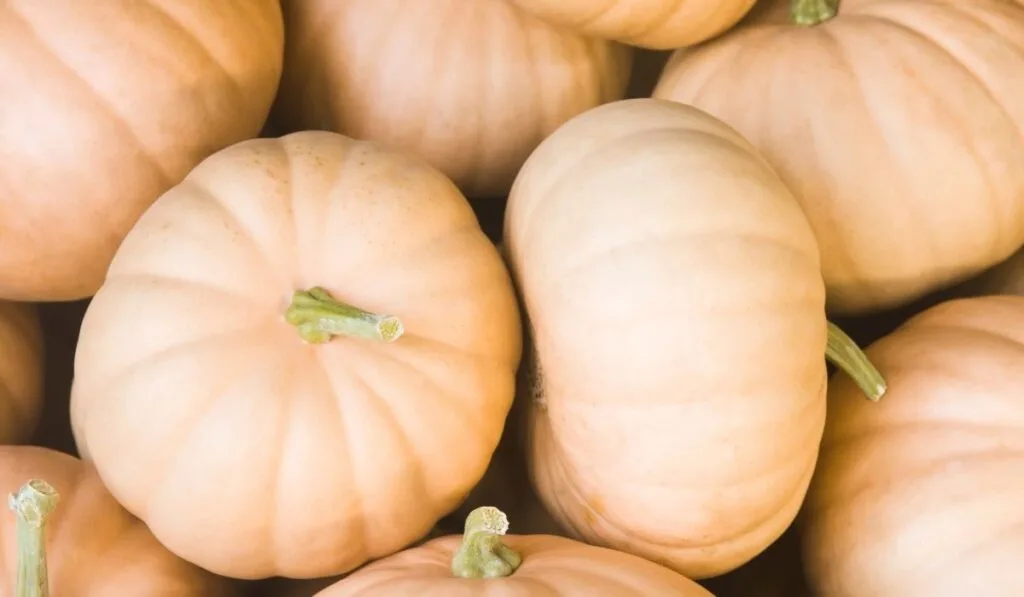
Long Island Cheese pumpkins are an American heirloom breed from Long Island, NY. They are creamy-yellow in color and are shaped like a giant cheese wheel, hence, the name.
Long Island Cheese pumpkins have a rich flavor with a slightly earthy tinge. They are widely used in preparing pie filling, all thanks to the tasty puree they form.
You can get Long Island Cheese pumpkins online at OurHarvest. You may also check local grocery stores and pumpkin farms.
11. Long Pie Pumpkins (Nantucket Pumpkins)
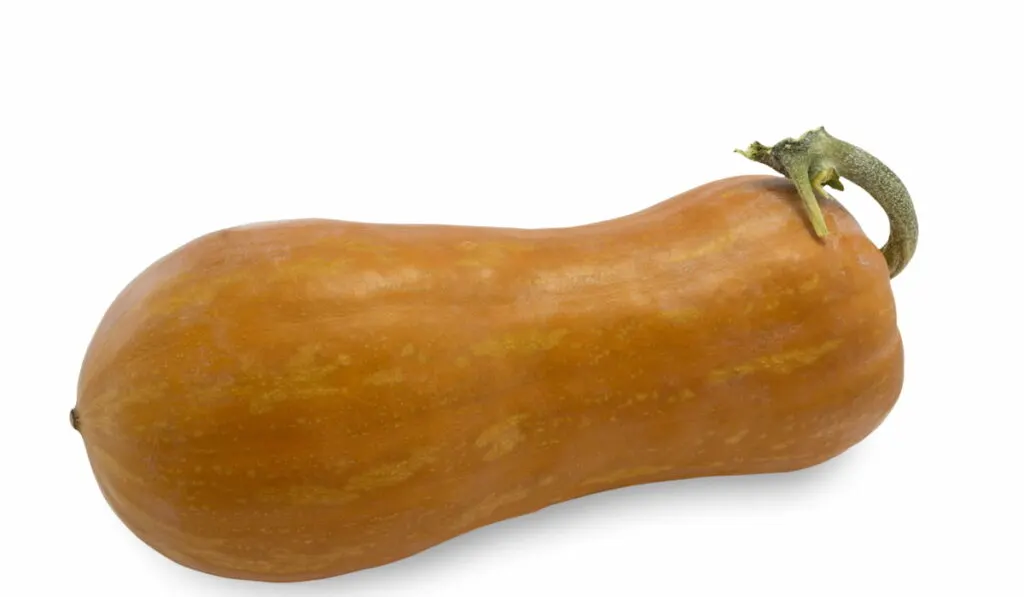
Long Pie pumpkins are an heirloom variety that originated from the East Coast. They may also be called Nantucket pumpkin.
Long Pie pumpkins are primarily used for culinary purposes. Of course, there is pie in their name, so you can expect greatness in your mouth when you make pies with them.
In the early days, Long Pie pumpkins are dark green. But when mature, they become tan orange. If you long for the classic pumpkin pie taste, then you should try baking your pie with Long Pie pumpkins.
You could check produce markets and grocery stores for Long Pie pumpkins.
12. Neck Pumpkin

Neck pumpkins also go by the name Crookneck pumpkins. Their awkward shape explains their interesting name.
Neck Pumpkins are related to Butternut pumpkins. Understandably, they look like a giant mutated Butternut pumpkin.
Neck pumpkins have sweet, stringless, and smooth orange flesh. When made into pies, they are equally tasty, and the pie’s texture is also smooth.
You can get Neck pumpkins at American Seed Co.
13. New England Sugar Pie

Of course, the name says it all, New England Sugar Pie pumpkins are tasty pie pumpkins. They are one of the pumpkins traditionally used in making pumpkin pies.
New England Sugar Pie pumpkins have sweet, yellow flesh with a rich flavor. They are pretty sweet and minimally stringy. Hence, their suitability for making pies.
New England Sugar Pie pumpkins are not hard to come by; you can readily get them in grocery stores.
14. Porcelain Doll Pumpkin
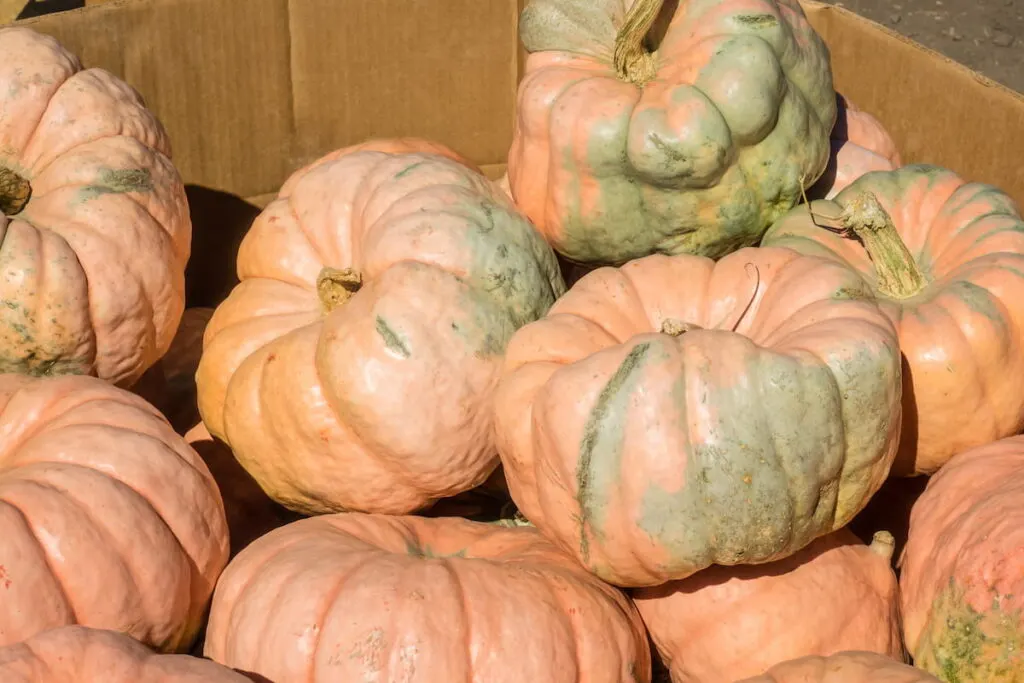
Porcelain Doll pumpkins are a hybrid variety that looks a lot like classic heirloom pumpkins. They come with a pale pink rind and orange flesh.
Porcelain Doll pumpkins make nicely flavored pies. Purees made from them are sweet and smooth. So, it is no surprise that they are one of the top options for making pies.
Some of the profits generated on Porcelain Doll pumpkins are donated to breast cancer research. So, you are not only making tasty pumpkin pies; you are contributing to a possible cure for breast cancer. You can get Porcelain Doll pumpkins in grocery stores and produce markets.
15. Seminole Pumpkin
Seminole pumpkins are small-sized American heirloom pumpkins from the Everglades, FL. They are pretty similar to Butternut pumpkins, but they withstand humid and hotter environments better.
Seminole pumpkins have deep orange flesh, and this color reflects in the pies made from them. They taste pretty much like Butternut pumpkins but are sweeter. So, you can expect sweet, smooth, and flavorful pies from them.
You can get Seminole pumpkins in general stores, grocery stores, and produce markets.
Resources
- https://www.homefortheharvest.com/best-pumpkins-for-pie/
- https://gardenerspath.com/plants/vegetables/best-pie-pumpkins/
- https://www.pumpkinpatchesandmore.org/Best-Pumpkins-for-Pumpkin-Pie.php
- https://blog-yard-garden-news.extension.umn.edu/2019/11/the-dark-secret-of-canned-pumpkin-what.html
- https://blog-yard-garden-news.extension.umn.edu/2019/11/the-dark-secret-of-canned-pumpkin-what.html
- https://veganfoundry.com/kabocha-squash-101-where-to-buy-it-and-how-to-use-it/
- https://pumpkinranch.com/pumpkin-squash-and-gourd-varieties/specialty-pumpkins/
